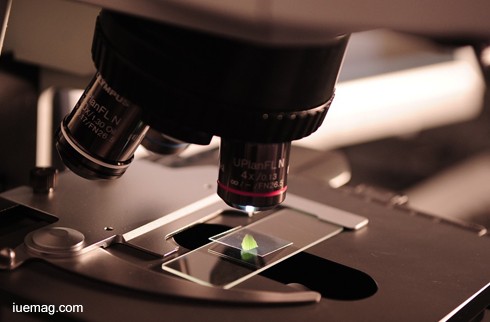

Science Pick
A collection of write-ups that speak for what's trending in science & technology.

Ad
8 Breathtaking Technological Discoveries and Breakthroughs
Here is the list of the some of the technology innovations which thoroughly surprised the entire world with their emergence.
1. Microscopes
Even if microscopes weren’t integral to the discovery of the cell – the building block of life as we know it, and we still would put them on this list of sheer coolness. How else were we to watch chromosomes replicate or marvel at the mosaic pattern of a mosquito eye? Without microscopes, a staggering portion of our world would remain invisible to us. The naked eye cannot see minute things and thus were made microscopes that would enable us to see the same. We have moved beyond the optical microscopes that English scientist Robert Hooke used to discover the cell; these days, scientists can manipulate individual atoms to write words and draw pictures using scanning tunnel and atomic force microscopes. If you are interested more about microscopes, microscopy, and microbiology, Microscope Clarity is a great site to visit.

2. The Hubble Telescope
Orbiting 360 miles (579 kilometer) above Earth and weighing as much as two adult elephants, the NASA’s Hubble Space Telescope is a giant among giants is really a marvel of science. The telescope has completed about 93,500 trips around the planet, taking three-quarters of a million snapshots and probing 24,000 celestial objects and phenomena. Each day the telescope sends back 3 to 4 gigabytes of data, or enough to fill six CDs. Hubble has arguably changed our view of the universe and our place in it with achievements such as one of the first direct photos of an exoplanet. In its Deep Field Survey, the scope aimed its lens at an “empty patch” of the sky.
3. Satellites for communication
The first Soviet satellite to enter Earth’s orbit may have struck fear in some hearts back in 1957, but the 21st century world is now addicted to its growing fleet of communication, navigation and remote sensing satellites. GPS satellites help drivers find their way to Black Friday sales, tell smartphone users where to find the nearest Starbucks, and guide the jetliners flying millions of people around the country for Thanksgiving – even if people sometimes rely upon GPS a little too much. People can also be thankful for satellite radio and satellite TV, even as they look forward to satellite Internet; satellite guided smart cars, and 4G wireless mobile service for smartphones.
4. Large Hadron Collider
Super-high-speed crashes that release enormous amounts of energy and could reveal exotic particles and even recreate conditions in the universe only a trillionth of a second after the Big Bang. The secrets of dark matter, the mysteries of the so-called God particle, and extra dimensions in the universe are just a few of the exotic discoveries scientists are hoping to make with the Large Hadron Collider (LHC), a 17 mile (27 km) circular tunnel running 300 feet (91 meters) underground near Geneva.
5. The Bionic Eye
The Argus Retinal Prosthesis is the first of its kind – a bionic retinal implant that helps people see the same way a hearing aid helps people hear. The Argus II was approved and released commercially in the United States in this year and received a firmware update that granted users color vision. The Argus II is a peek into the future – a glance into a future where once these implants get good enough, a bionic eye will be better than a natural human one.
6. Lab grown meat is eaten
And it “almost” tastes like real thing. After five years and $ 330,000 dollars worth of research money, the fake beef in the world’s first lab grown burger was finally cooked and eaten. It was created from stem cells in a London lab and was funded primarily by Google cofounder Sergey Brin. It’s still unclear whether something like this could truly solve world hunger, but it’s an incredible technological accomplishment in its own right.
Get the Latest & Recommended articles in your Inbox
7. Smart Contact Lenses
A smart contact lens that can monitor the glucose levels of diabetes sufferers was developed by Google in January. Coming out of the company’s Google X skunk works division, best known for developing Google Glass, the contact lenses use chips and sensors the size of glitter to offer an early warning to the wearer by analyzing tears.
8. The Wheel itself
The invention of the wheel falls into the late Neolithic period, and may be seen in conjunction, with other technological advances that gave rise to the early Bronze Age. It is a circular component that is intended to rotate on an axle bearing. It is a simple machine and has many many applications in every aspect of life.
On CashOnBuy.com, you may get many books to enlighten yourself on the same and grab these all at really exciting offers too.
Copyrights © 2024 Inspiration Unlimited eMagazine
Any facts, figures or references stated here are made by the author & don't reflect the endorsement of iU at all times unless otherwise drafted by official staff at iU. This article was first published here on 7th February 2017.



